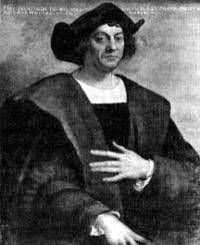Christopher Columbus buried in Seville, researchers say

A forensic team led by Spanish geneticist Jose Antonio Lorente has compared DNA from bone fragments that Spain says are from the explorer - and are buried in a cathedral in Seville, with DNA from remains that are known to be from Columbus' brother Diego, who is also buried in the southern Spanish city.
"There is absolute matchup between the mitochondrial DNA we have studied from Columbus' brother and Christopher Columbus," said Marcial Castro, a Seville-area historian and high school teacher who is the mastermind behind the project, which began in 2002. Mitochondria are cell components rich in DNA.
Castro and his research colleagues have been trying in vain for years to convince the Dominican Republic to open up an ornate lighthouse monument in the capital Santo Domingo that it says holds the remains of the explorer.
The goal was to compare those remains to the ones from Diego in Seville to determine which country had buried the man who arrived in the New World in 1492, landing at the island of Hispaniola, which today comprises the Dominican Republic and Haiti, according to the AP.
Castro stressed in an interview that, although his team is convinced the bones in Seville are from Columbus, this does not necessarily mean the ones in Santo Domingo are not. Columbus' body was moved several times after his death and the tomb in Santo Domingo might conceivably also hold part of the right body. "We don't know what is in there," Castro said.
Castro said that in light of the DNA evidence from Spain, the objective of opening the Santo Domingo tomb would be to determine who, if not Columbus, is buried there.
Columbus died and was buried in Valladolid on May 20, 1506. He had asked to be buried in the Americas, but no church of sufficient stature existed there.
Three years later his remains were moved to a monastery on La Cartuja, a river island next to Seville. In 1537, Maria de Rojas y Toledo, widow of one of Columbus' sons, Diego, sent the bones of her husband and his father to the cathedral in Santo Domingo for burial.
There they lay until 1795, when Spain ceded Hispaniola to France and decided Columbus' remains should not fall into the hands of foreigners.
Subscribe to Pravda.Ru Telegram channel, Facebook, RSS!


